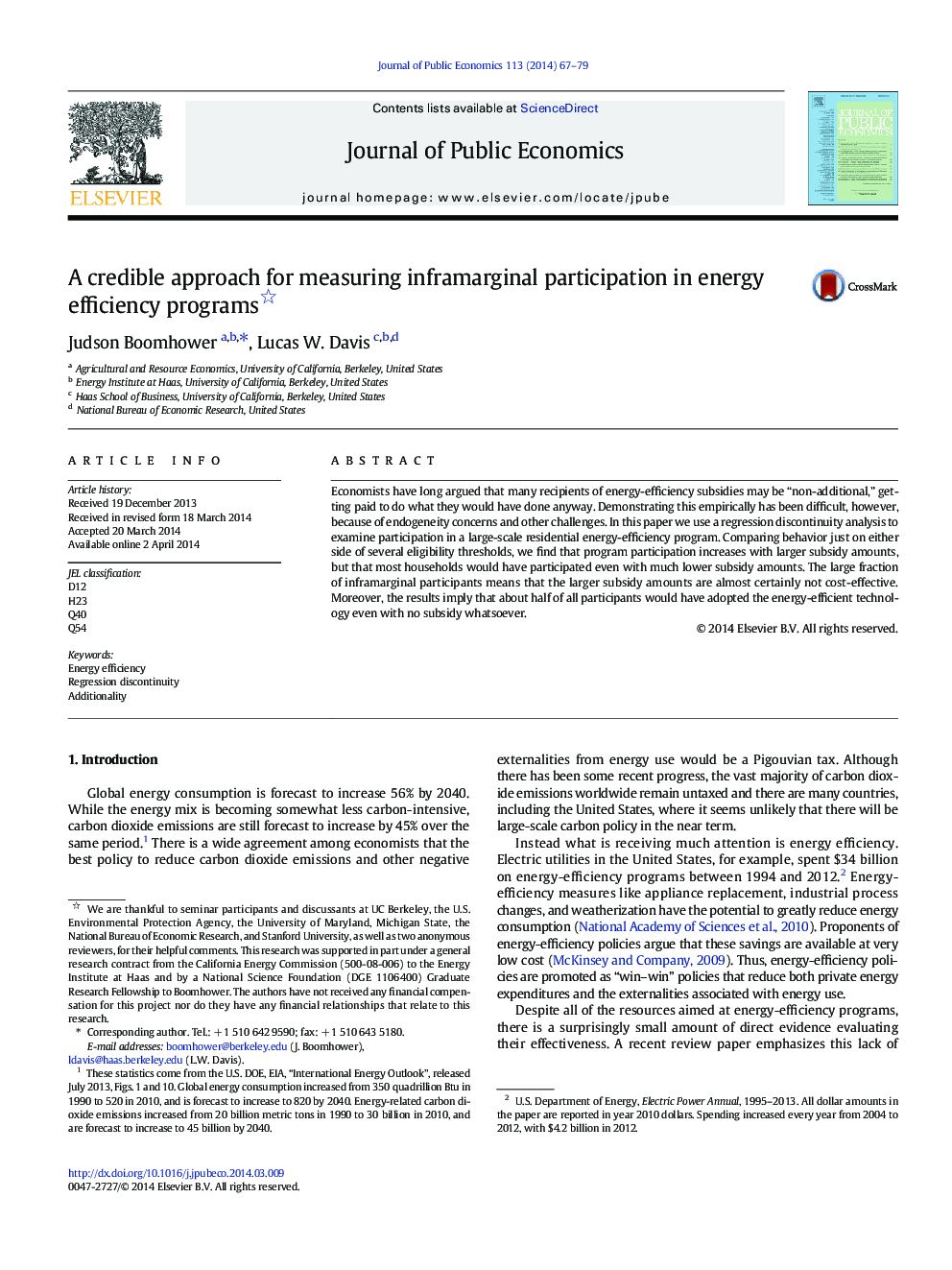| Article ID | Journal | Published Year | Pages | File Type |
|---|---|---|---|---|
| 7370367 | Journal of Public Economics | 2014 | 13 Pages |
Abstract
Economists have long argued that many recipients of energy-efficiency subsidies may be “non-additional,” getting paid to do what they would have done anyway. Demonstrating this empirically has been difficult, however, because of endogeneity concerns and other challenges. In this paper we use a regression discontinuity analysis to examine participation in a large-scale residential energy-efficiency program. Comparing behavior just on either side of several eligibility thresholds, we find that program participation increases with larger subsidy amounts, but that most households would have participated even with much lower subsidy amounts. The large fraction of inframarginal participants means that the larger subsidy amounts are almost certainly not cost-effective. Moreover, the results imply that about half of all participants would have adopted the energy-efficient technology even with no subsidy whatsoever.
Related Topics
Social Sciences and Humanities
Economics, Econometrics and Finance
Economics and Econometrics
Authors
Judson Boomhower, Lucas W. Davis,
